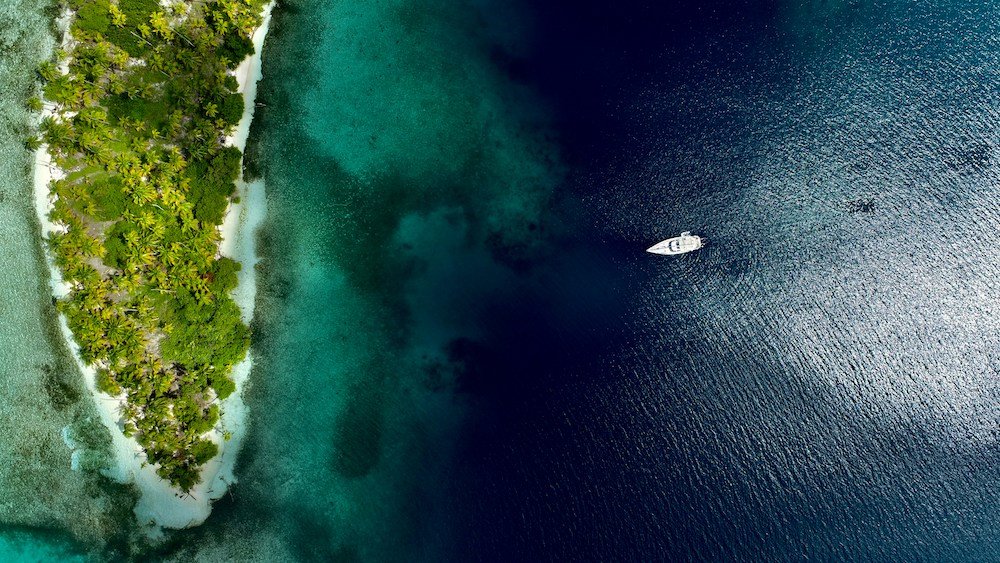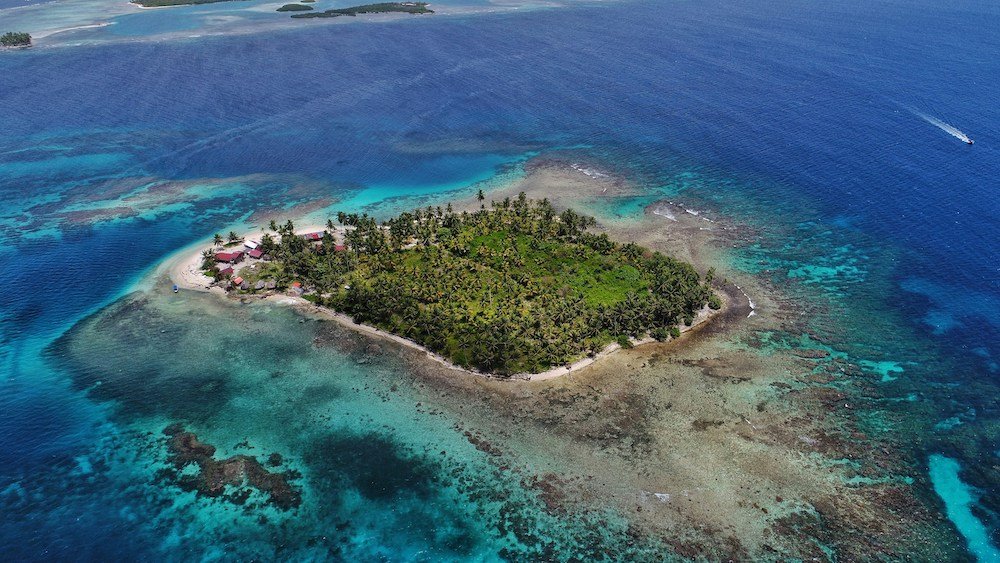
Want to discover things you should know before visiting the San Blas Islands?
The San Blas Islands, also known as the Guna Yala, are an archipelago comprising around 365 islands scattered along the northeastern coast of Panama, bordering the Caribbean Sea.
These islands are renowned for their pristine beaches, crystal-clear turquoise waters, and vibrant coral reefs.
The majority of the islands are uninhabited, while others are home to the indigenous Guna (or Kuna) people, who have preserved their traditional way of life and culture for centuries.
The allure of the San Blas Islands lies in their unspoiled beauty and authentic cultural experiences.
Unlike many other tourist destinations, the San Blas Islands have retained their natural charm and remain relatively untouched by commercialization.
Travelers flock to these remote islands to escape the hustle and bustle of city life and immerse themselves in the serenity of paradise.
The islands offer a plethora of activities for visitors, including snorkeling, diving, sailing, and sunbathing on pristine white-sand beaches.
The opportunity to interact with the indigenous Guna people and learn about their rich traditions and customs adds a unique cultural dimension to the travel experience.
Moreover, the San Blas Islands provide a perfect setting for eco-tourism, with their lush tropical forests, diverse marine life, and protected coral reefs.
Conscious travelers are drawn to the region’s commitment to sustainable tourism practices, ensuring the preservation of its natural and cultural heritage for future generations.
Geography and Location

The San Blas Islands are situated along the northeastern coastline of Panama, bordering the Caribbean Sea.
Spanning an area of approximately 300 square kilometers, this archipelago comprises around 365 islands and cays, of which only about 49 are inhabited.
The islands are part of the semi-autonomous Guna Yala region, which is governed by the indigenous Guna people.
Geography and Landscape of the Islands
Characterized by pristine white-sand beaches, crystal-clear turquoise waters, and lush tropical vegetation, the San Blas Islands boast some of the most breathtaking landscapes in the Caribbean.
The islands vary in size, with some barely large enough to accommodate a single palm tree, while others are more expansive and feature dense forests teeming with wildlife.
The terrain of the islands ranges from flat sandy beaches to rocky outcrops and mangrove forests.
Coral reefs fringe many of the islands, providing habitat for a diverse array of marine life and making the San Blas Islands a popular destination for snorkeling and diving enthusiasts.
Climate and Weather Patterns
The San Blas Islands enjoy a tropical maritime climate characterized by warm temperatures and high humidity throughout the year.
The region experiences two primary seasons: the dry season and the wet season.
- Dry Season: The dry season typically extends from December to April, offering visitors sunny skies, calm seas, and balmy temperatures ranging from 75°F to 85°F (24°C to 29°C). This period is considered the peak tourist season, attracting travelers seeking to escape the winter chill and bask in the Caribbean sunshine.
- Wet Season: From May to November, the San Blas Islands experience increased rainfall and occasional thunderstorms, particularly in the afternoons and evenings. Despite the rain, temperatures remain relatively consistent, ranging from 75°F to 88°F (24°C to 31°C). The wet season also coincides with the Atlantic hurricane season, although the islands are less prone to direct hits compared to other Caribbean destinations.
Visitors should be prepared for sudden changes in weather and pack accordingly, especially during the wet season.
However, regardless of the season, the San Blas Islands offer stunning natural beauty and a warm tropical ambiance that entices travelers year-round.
History and Culture
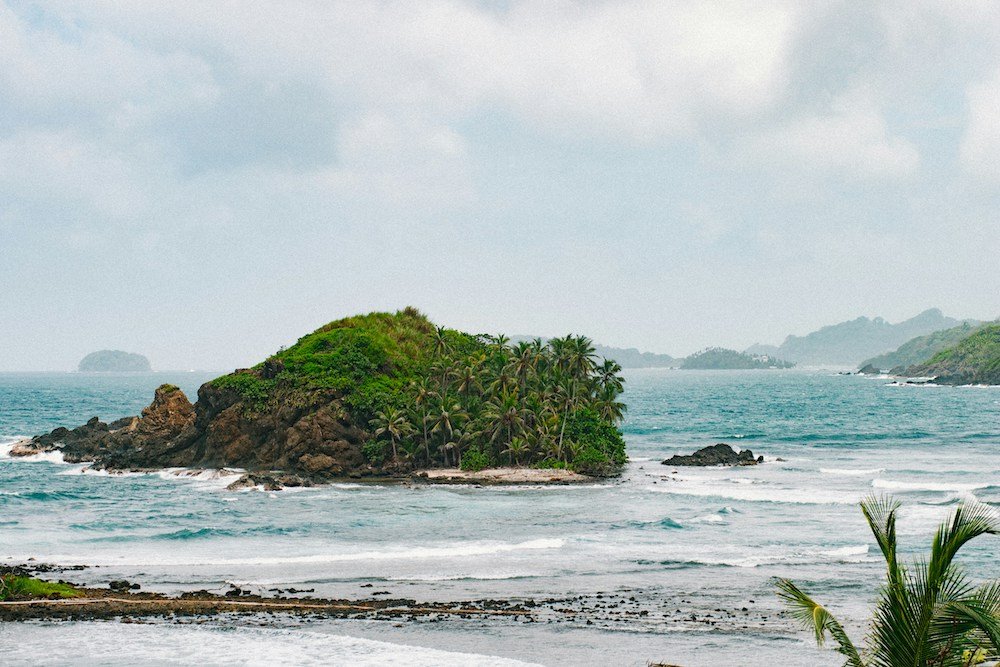
Indigenous Communities Inhabiting the Islands
The San Blas Islands are home to the indigenous Guna people, also known as the Kuna. The Guna have inhabited the region for centuries, living in harmony with the land and sea.
Despite the encroachment of modernity, the Guna have managed to preserve their traditional way of life and maintain their cultural identity.
The Guna people are organized into semi-autonomous communities known as “comarcas,” which are governed by a traditional political structure based on collective decision-making and consensus-building.
Each community elects a “saila” (chief) to lead and represent them in matters concerning the community’s welfare and governance.
Historical Significance of the San Blas Islands
The San Blas Islands hold significant historical importance, dating back to pre-Columbian times when they served as a refuge for indigenous peoples fleeing Spanish colonization.
The Guna fiercely resisted European incursions into their territory, eventually reaching a peace agreement with the Panamanian government in the early 20th century, which granted them semi-autonomous status over their ancestral lands.
The islands also played a strategic role during the colonial era as a waypoint for Spanish galleons transporting treasures from the New World to Europe.
Today, remnants of Spanish forts and shipwrecks serve as reminders of the region’s storied past and attract history enthusiasts from around the world.
Cultural Practices and Traditions of the Kuna People
The Guna people take great pride in their cultural heritage, which is richly reflected in their language, art, music, and traditional attire.
The women of the Guna community are renowned for their intricate handiwork, particularly the colorful “molas” – reverse appliqué textiles depicting geometric designs and motifs inspired by nature and daily life.
The Guna are also known for their vibrant festivals and ceremonies, which celebrate important milestones in their lives, such as coming-of-age rituals, weddings, and harvest festivals.
These events often feature traditional dances, music, and feasting, providing visitors with a glimpse into the rich tapestry of Guna culture and traditions.
Respect for nature and the environment is deeply ingrained in Guna philosophy, as evidenced by their sustainable land management practices and spiritual connection to the natural world.
The Guna believe in the importance of preserving ecological balance and living in harmony with the earth, a philosophy that resonates strongly with contemporary efforts towards environmental conservation and sustainable development.
Getting There
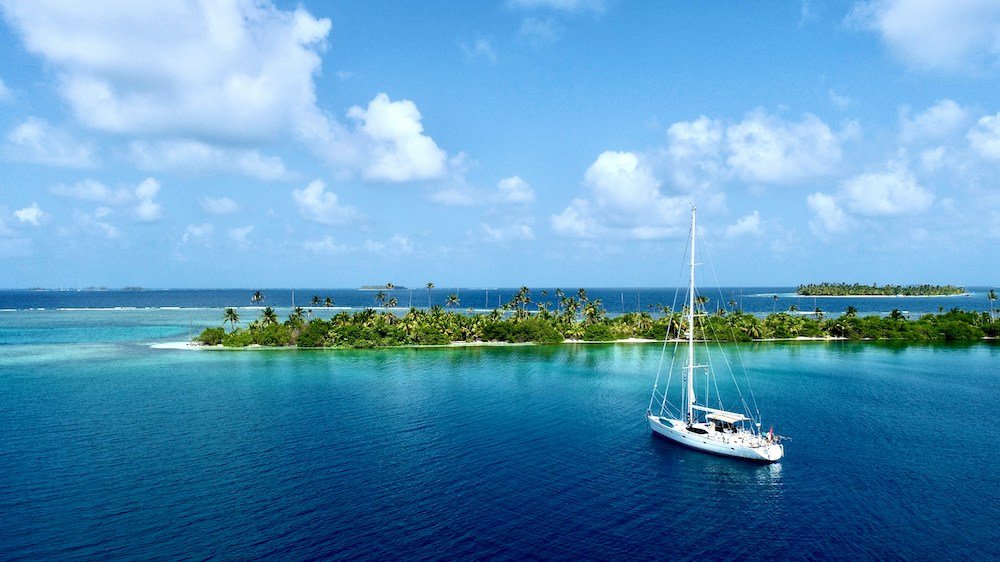
Transportation Options to Reach the San Blas Islands
Accessing the remote beauty of the San Blas Islands requires careful planning and consideration of available transportation options.
Travelers can choose from several methods to reach these idyllic shores:
- Domestic Flights: One of the most convenient ways to reach the San Blas Islands is by taking a domestic flight from Panama City to one of the regional airports, such as El Porvenir or Playón Chico. Several local airlines offer scheduled flights to these destinations, providing quick and hassle-free access to the archipelago.
- 4×4 Transportation: For adventurous travelers looking to explore the scenic landscapes of Panama’s eastern coast, 4×4 transportation services are available from Panama City to Cartí, the gateway to the San Blas Islands. The journey involves traversing rugged terrain and crossing rivers, offering an exhilarating off-road experience.
- Boat Transfers: Many tour operators and local boat captains offer transportation services from the mainland to the San Blas Islands. Travelers can arrange for boat transfers from coastal towns such as Cartí or Puerto Lindo, with options ranging from private charters to shared water taxis.
Airports and Nearby Cities
The primary airports serving the San Blas Islands are located in the vicinity of Panama City:
- Tocumen International Airport (PTY): Panama City’s main international airport, located approximately 20 kilometers from the city center. Tocumen Airport offers numerous domestic and international flights, making it a convenient gateway for travelers to access the San Blas Islands.
- Albrook “Marcos A. Gelabert” International Airport (PAC): Situated within Panama City, Albrook Airport serves as a hub for domestic flights, including routes to regional airports near the San Blas Islands.
Boat Tours and Charters
Embarking on a boat tour or charter is one of the most popular ways to explore the San Blas Islands and discover their hidden treasures. Several tour operators and independent boat captains offer a variety of excursions and packages tailored to different interests and preferences:
- Day Trips: Ideal for travelers short on time, day trips allow visitors to experience the highlights of the San Blas Islands, including snorkeling, swimming, and beach-hopping on pristine islets.
- Multi-Day Excursions: For those seeking a more immersive experience, multi-day sailing trips offer the opportunity to explore remote islands, interact with indigenous communities, and witness breathtaking sunsets over the Caribbean Sea.
- Private Charters: Travelers can also opt for private charters, customizing their itinerary and enjoying the flexibility of exploring the San Blas Islands at their own pace. Private charters are perfect for groups, families, or couples seeking a personalized and exclusive travel experience.
Accommodation Options
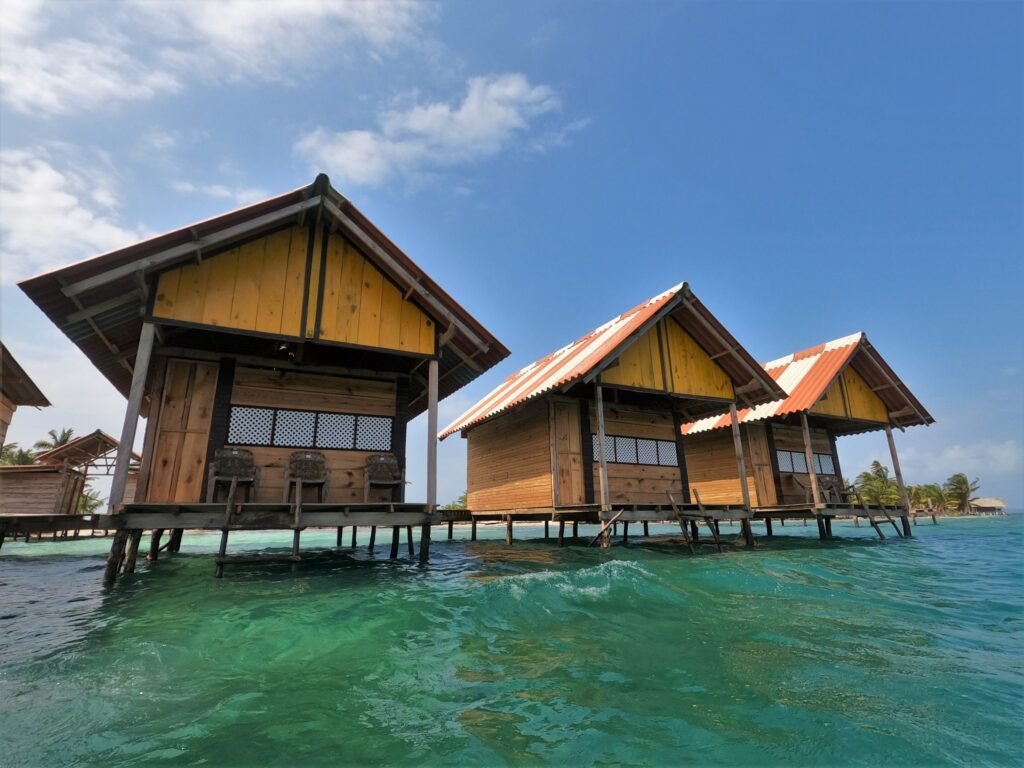
Types of Accommodations Available on the Islands
Visitors to the San Blas Islands can choose from a variety of accommodation options catering to different preferences and budgets.
From luxurious resorts to rustic eco-lodges, there’s something for every traveler seeking to experience the beauty of this Caribbean paradise:
- Beachfront Resorts: Several upscale resorts dot the shores of the San Blas Islands, offering luxurious accommodations, world-class amenities, and stunning ocean views. These resorts provide guests with a tranquil retreat amidst the natural splendor of the archipelago.
- Eco-Lodges and Cabins: For eco-conscious travelers looking to minimize their environmental footprint, eco-lodges and rustic cabins provide comfortable yet sustainable accommodations. Nestled amidst lush tropical foliage, these eco-friendly retreats offer a peaceful escape from the hustle and bustle of modern life.
- Guesthouses and Homestays: Travelers seeking authentic cultural experiences can opt to stay in guesthouses or homestays operated by local Guna families. This immersive lodging option allows visitors to immerse themselves in Guna culture, sample traditional cuisine, and participate in community activities.
Recommendations for Hotels, Resorts, and Eco-Lodges
- Yandup Island Lodge: Situated on a private island in the San Blas archipelago, Yandup Island Lodge offers guests an exclusive retreat surrounded by pristine beaches and crystal-clear waters. The eco-friendly lodge features cozy cabanas equipped with modern amenities, allowing visitors to reconnect with nature without sacrificing comfort.
- Coral Lodge: Nestled on the shores of a secluded cay, Coral Lodge provides guests with a luxurious island getaway amidst breathtaking natural beauty. The resort offers spacious bungalows overlooking the Caribbean Sea, gourmet dining options, and a range of outdoor activities such as snorkeling, kayaking, and beachcombing.
- Akwa Yala: This eco-lodge embodies sustainable tourism principles, offering guests a serene setting to unwind and rejuvenate. Akwa Yala features charming cabanas nestled amidst lush gardens, a restaurant serving locally sourced cuisine, and guided tours showcasing the region’s biodiversity and cultural heritage.
Camping and Beachside Accommodations
For adventurous travelers seeking a more immersive experience, camping and beachside accommodations provide an opportunity to sleep under the stars and wake up to the sound of waves lapping against the shore.
Many of the uninhabited islands in the San Blas archipelago offer designated camping areas where visitors can pitch tents and enjoy a night under the Caribbean sky.
Several tour operators also offer camping packages that include equipment rental, meals, and guided activities such as bonfires, stargazing, and sunrise yoga sessions.
Camping in the San Blas Islands allows travelers to disconnect from the outside world and embrace the simplicity of island life while surrounded by nature’s splendor.
Things to Do and See
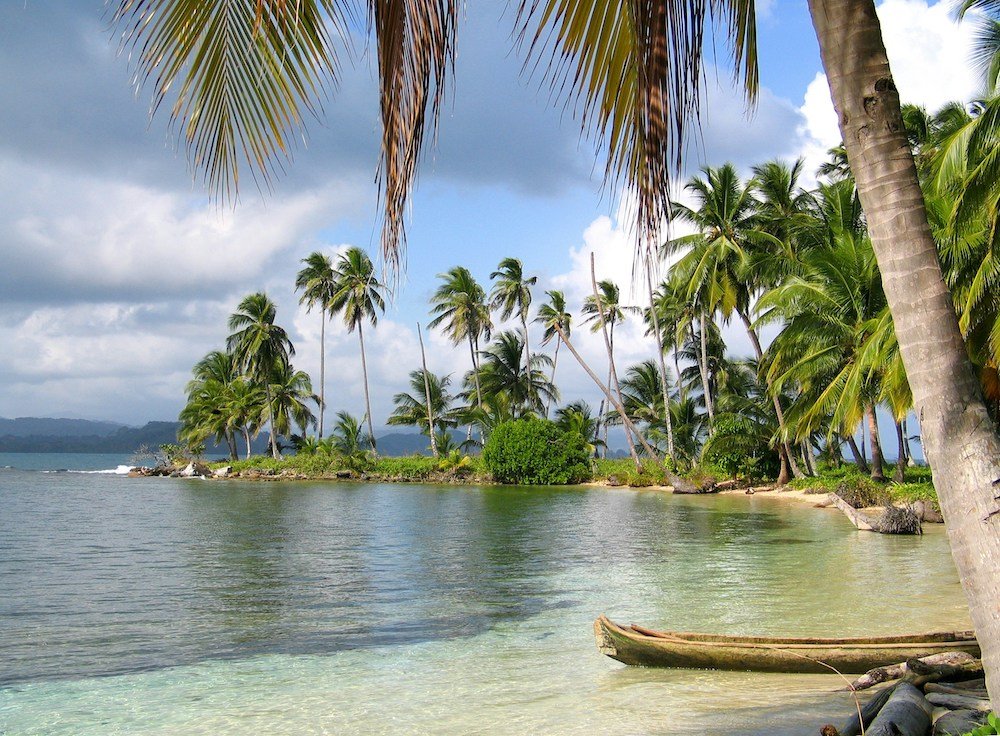
Snorkeling and Scuba Diving Spots
The San Blas Islands boast some of the most spectacular snorkeling and scuba diving spots in the Caribbean, offering visitors the chance to explore vibrant coral reefs teeming with marine life.
Some of the must-visit dive sites include:
- Hollandes Cays: Known for its crystal-clear waters and diverse marine ecosystem, Hollandes Cays is a popular snorkeling and diving destination. Visitors can encounter colorful coral gardens, tropical fish, and even the occasional sea turtle or stingray.
- Dog Island: Renowned for its pristine coral formations and abundant marine biodiversity, Dog Island offers an unparalleled underwater experience for snorkelers and divers alike. The crystal-clear visibility and calm waters make it an ideal spot for exploring the vibrant reef ecosystem.
Exploring the Pristine Beaches and Cays
The San Blas Islands are renowned for their picture-perfect beaches and secluded cays, where visitors can unwind and soak up the sun in paradise.
Some of the top beaches and cays to explore include:
- Starfish Beach: Located on Isla Estrella, Starfish Beach is famous for its shallow turquoise waters and abundance of starfish. Visitors can wade in the gentle surf, sunbathe on the powdery white sand, and marvel at the natural beauty of the surroundings.
- Isla Perro: This tiny island is home to one of the most stunning beaches in the San Blas archipelago, with its powdery white sand and crystal-clear waters. Isla Perro is also known for its excellent snorkeling opportunities, with vibrant coral reefs just offshore.
Visiting Kuna Villages and Experiencing Local Culture
Immerse yourself in the rich cultural heritage of the Guna people by visiting traditional villages scattered throughout the San Blas Islands.
Explore the narrow streets lined with colorful houses, browse handmade crafts at local markets, and learn about the fascinating customs and traditions of the Kuna people.
Wildlife Spotting and Birdwatching Opportunities
The San Blas Islands are home to a diverse array of wildlife, both on land and in the sea.
Keep an eye out for playful dolphins frolicking in the waves, sea turtles nesting on sandy shores, and colorful tropical birds soaring overhead.
Birdwatchers will delight in spotting species such as frigatebirds, pelicans, and herons in their natural habitat.
Water Sports Activities Such as Kayaking and Paddleboarding
Explore the pristine waters of the San Blas Islands by embarking on a kayaking or paddleboarding adventure.
Glide through tranquil lagoons, navigate mangrove forests, and discover hidden coves and secret beaches accessible only by water.
Kayaking and paddleboarding offer a unique perspective of the islands and allow visitors to connect with nature in a peaceful and serene setting.
Cuisine and Dining
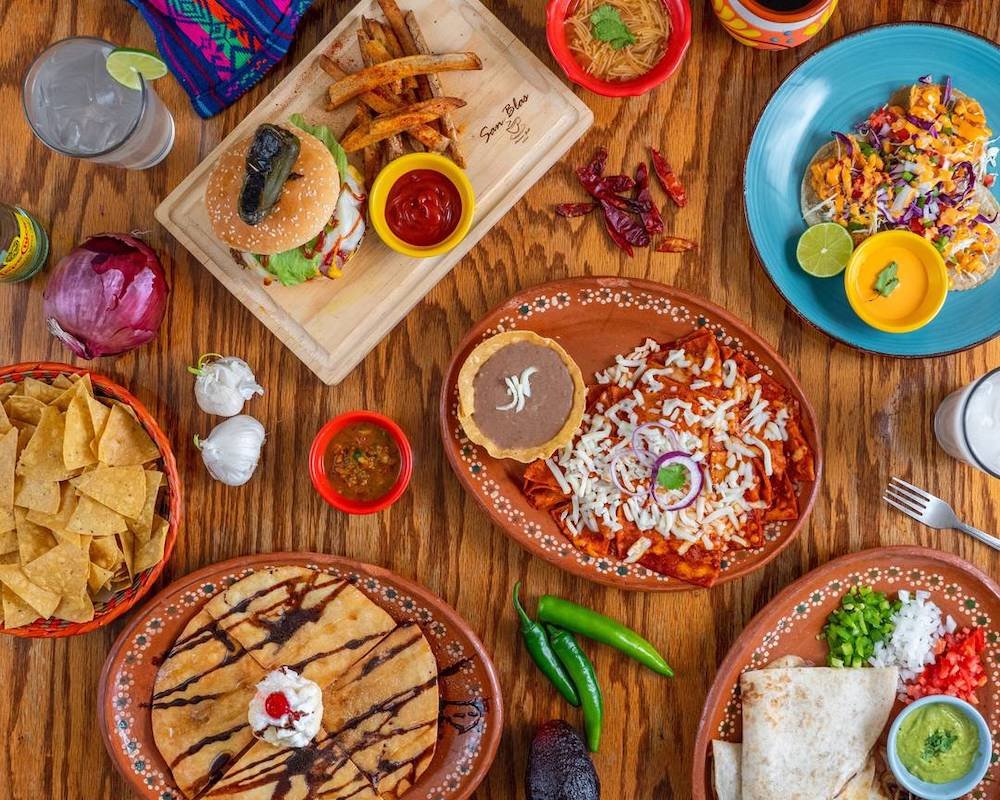
Traditional Kuna Cuisine and Specialties
The cuisine of the San Blas Islands reflects the rich cultural heritage of the indigenous Guna people, blending traditional ingredients and cooking techniques passed down through generations.
Some of the signature dishes and specialties of Kuna cuisine include:
- Coconut Rice: A staple dish made from rice cooked in coconut milk, often served alongside fresh seafood or meat dishes.
- Patacones: Fried plantains mashed into crispy discs, served as a savory side dish or snack with a variety of toppings such as cheese, beans, or seafood.
- San Blas Lobster: Renowned for its succulent flavor and tender texture, San Blas lobster is a delicacy enjoyed by locals and visitors alike. Grilled, steamed, or served in a savory sauce, lobster dishes are a highlight of Kuna cuisine.
Recommended Restaurants and Dining Options on the Islands
While dining options on the San Blas Islands may be limited compared to urban centers, visitors can still enjoy delicious meals prepared with fresh, locally sourced ingredients.
Some recommended restaurants and dining options include:
- Coco Blanco Restaurant: Located on Isla Pelicano, Coco Blanco Restaurant offers a diverse menu featuring traditional Kuna dishes, fresh seafood, and international cuisine. Dine al fresco on the beachfront terrace and savor panoramic views of the Caribbean Sea.
- Yandup Island Lodge Restaurant: Guests staying at Yandup Island Lodge can enjoy delicious meals prepared with organic ingredients sourced from the lodge’s garden and local suppliers. The restaurant specializes in gourmet seafood dishes, grilled meats, and vegetarian options, showcasing the flavors of Panama’s culinary heritage.
Fresh Seafood and Local Delicacies
One of the highlights of dining in the San Blas Islands is the abundance of fresh seafood harvested from the surrounding waters.
From succulent lobster and crab to plump shrimp and fish, the local seafood is a culinary delight not to be missed.
Be sure to sample traditional Kuna ceviche, a refreshing dish made with marinated fish or shellfish, lime juice, and spices.
In addition to seafood, visitors can indulge in a variety of local delicacies and snacks, including tropical fruits such as mangoes, papayas, and coconuts, as well as homemade empanadas, tamales, and pastries sold by local vendors and street food stalls.
Tips for Visitors

Packing Essentials for a Trip to the San Blas Islands
When preparing for a trip to the San Blas Islands, it’s essential to pack wisely to ensure a comfortable and enjoyable experience. Some packing essentials to consider include:
- Lightweight Clothing: Pack lightweight, breathable clothing suitable for warm tropical weather, including swimsuits, shorts, t-shirts, and cover-ups. Don’t forget to include a wide-brimmed hat, sunglasses, and sunscreen for sun protection.
- Waterproof Gear: Given the abundance of water-based activities, consider packing waterproof gear such as dry bags, waterproof phone cases, and water shoes for beachcombing and reef exploration.
- Insect Repellent: Mosquitoes and other insects can be prevalent in tropical environments, so be sure to pack insect repellent to protect against bites.
- Travel Documents: Don’t forget to bring essential travel documents such as passports, visas (if required), travel insurance, and any necessary permits for visiting the San Blas Islands.
Health and Safety Considerations
Prioritize your health and safety during your visit to the San Blas Islands by following these guidelines:
- Stay Hydrated: Drink plenty of water to stay hydrated, especially in the warm tropical climate. Consider bringing a reusable water bottle to minimize plastic waste.
- Sun Protection: Protect yourself from the sun’s harmful rays by wearing sunscreen with a high SPF, seeking shade during peak sun hours, and staying hydrated.
- Medical Supplies: Pack a basic first-aid kit with essential medical supplies such as bandages, antiseptic wipes, pain relievers, and any personal medications you may need.
- Water Safety: Exercise caution when swimming and snorkeling, especially in areas with strong currents or rocky terrain. Follow local safety guidelines and heed the advice of experienced guides and boat captains.
Respectful Behavior and Cultural Etiquette
Show respect for the local culture and customs of the Guna people by observing the following etiquette:
- Dress Modestly: When visiting Guna villages and cultural sites, dress modestly and avoid wearing revealing clothing out of respect for local customs and traditions.
- Seek Permission: Always seek permission before taking photographs of individuals, especially members of the Guna community. Respect their privacy and cultural practices.
- Learn Basic Phrases: Take the time to learn a few basic phrases in the Guna language, such as greetings and expressions of gratitude. This gesture demonstrates respect for the local culture and fosters positive interactions with community members.
Environmental Conservation Efforts
Help preserve the natural beauty and ecological integrity of the San Blas Islands by practicing responsible tourism:
- Reduce Waste: Minimize your environmental impact by reducing plastic waste, recycling whenever possible, and avoiding single-use plastics.
- Respect Wildlife: Refrain from touching or disturbing wildlife, including marine creatures and nesting birds. Observe animals from a safe distance and avoid feeding them.
- Leave No Trace: Leave the islands as you found them by disposing of trash properly, respecting natural habitats, and refraining from removing shells, corals, or other marine artifacts.
Sustainable Tourism Initiatives

Efforts to Preserve the Natural Beauty of the Islands
Preserving the natural beauty and ecological integrity of the San Blas Islands is a top priority for local authorities and conservation organizations.
Some of the key efforts to protect the environment include:
- Marine Protected Areas: Designating marine protected areas (MPAs) helps safeguard sensitive marine ecosystems and preserve critical habitats for marine species. These protected areas restrict certain activities such as fishing and anchoring to minimize human impact on coral reefs and seagrass beds.
- Coral Reef Conservation: Implementing coral reef conservation initiatives, such as coral restoration projects and monitoring programs, helps mitigate the impacts of climate change, pollution, and overfishing on coral reef ecosystems. These efforts aim to restore damaged reefs and promote resilience to environmental stressors.
- Waste Management Programs: Implementing effective waste management programs helps mitigate marine pollution and reduce plastic waste in the San Blas Islands. Community-led initiatives focus on waste reduction, recycling, and beach clean-up campaigns to maintain pristine shorelines and protect marine life.
Community-Based Tourism Projects Supporting the Kuna People
Community-based tourism projects play a vital role in empowering the indigenous Guna people and promoting sustainable development in the San Blas Islands.
These initiatives focus on:
- Cultural Preservation: Community-based tourism projects provide opportunities for the Guna people to share their rich cultural heritage with visitors while preserving traditional customs, language, and craftsmanship. Tourists can participate in cultural experiences such as traditional dances, artisanal workshops, and visits to Guna villages.
- Economic Empowerment: By engaging in tourism-related activities such as homestays, guided tours, and handicraft sales, the Guna community can generate income and improve livelihoods while maintaining ownership and control over their cultural assets and natural resources.
- Capacity Building: Community-based tourism projects prioritize capacity building and skill development within the Guna community, empowering local residents to actively participate in the tourism industry and take ownership of sustainable development initiatives.
Responsible Travel Practices for Visitors
As stewards of the environment and guests in the San Blas Islands, visitors can contribute to sustainable tourism through responsible travel practices:
- Support Local Communities: Patronize locally owned businesses, purchase handmade crafts directly from artisans, and engage in cultural exchanges with the Guna people to support sustainable livelihoods and community development.
- Minimize Environmental Impact: Practice Leave No Trace principles by disposing of waste properly, conserving water and energy, and minimizing your ecological footprint during your stay in the San Blas Islands.
- Respect Cultural Sensitivities: Respect cultural traditions and customs, seek permission before taking photographs, and engage with local residents in a respectful and considerate manner.
Conclusion
Visiting the San Blas Islands offers travelers an unparalleled opportunity to immerse themselves in the pristine beauty and rich cultural heritage of one of the Caribbean’s hidden gems.
From secluded beaches and vibrant coral reefs to traditional Guna villages and eco-friendly accommodations, the San Blas Islands captivate visitors with their natural splendor and authentic charm.
For adventurers, nature enthusiasts, and cultural explorers alike, the San Blas Islands beckon with endless possibilities for discovery and relaxation.
Whether you seek adventure beneath the waves, cultural immersion in indigenous communities, or simply a tranquil escape from the hustle and bustle of modern life, the San Blas Islands offer an unforgettable journey into paradise.
As you plan your journey to the San Blas Islands, remember to embrace the spirit of adventure, respect for nature, and appreciation for local culture that define this unique destination.
Take the time to explore hidden coves, swim with colorful marine life, and connect with the warm and welcoming Guna people who call these islands home.

FAQ’s About the San Blas Islands:
Why is San Blas Islands famous?
The San Blas Islands are famous for their breathtaking natural beauty, pristine beaches, and vibrant coral reefs.
They offer a serene escape from the hustle and bustle of modern life, allowing visitors to immerse themselves in the tranquil ambiance of paradise.
Are San Blas Islands expensive?
The cost of visiting the San Blas Islands can vary depending on factors such as accommodation, transportation, and activities.
While some accommodations and tours may be considered expensive, there are also budget-friendly options available for travelers seeking more affordable experiences.
Is San Blas worth it?
Yes, San Blas Islands are definitely worth visiting for those who appreciate unspoiled nature, authentic cultural experiences, and serene beachscapes.
The islands offer a unique opportunity to disconnect from the outside world and reconnect with the beauty of the natural world.
How do you get to the San Blas Islands?
The most common way to reach the San Blas Islands is by flying from Panama City to regional airports such as El Porvenir or Playón Chico.
From there, travelers can take boats or 4×4 transportation to reach their desired island destinations.
How many days do you need in San Blas islands?
The ideal duration of a visit to the San Blas Islands depends on individual preferences and travel plans.
While some travelers may opt for a short day trip, others may choose to spend several days exploring the various islands, beaches, and cultural attractions.
Can you swim in San Blas?
Yes, swimming is a popular activity in the San Blas Islands, thanks to the clear turquoise waters and pristine beaches. Visitors can enjoy swimming, snorkeling, and other water-based activities throughout their stay.
Is there malaria in San Blas Islands?
While malaria is present in some regions of Panama, including areas outside the San Blas Islands, the risk of contracting malaria in the islands themselves is relatively low.
However, it’s always advisable to take necessary precautions and consult with a healthcare professional before traveling.
What is the best island to stay on in San Blas?
The best island to stay on in San Blas depends on individual preferences and interests.
Some popular islands for accommodations include Isla Pelicano, Isla Perro, and Isla Chichime, each offering unique experiences and attractions.
How safe is San Blas?
San Blas Islands are generally considered safe for travelers. The indigenous Guna people who inhabit the islands are welcoming and hospitable to visitors.
However, as with any travel destination, it’s essential to take standard safety precautions and respect local customs and traditions.
